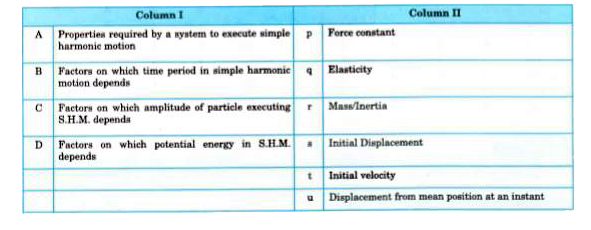Column I describes some situations in which a small object moves. Column II describes some characteristics of these motion. Match the situtions in column I with the characteristics in column II.
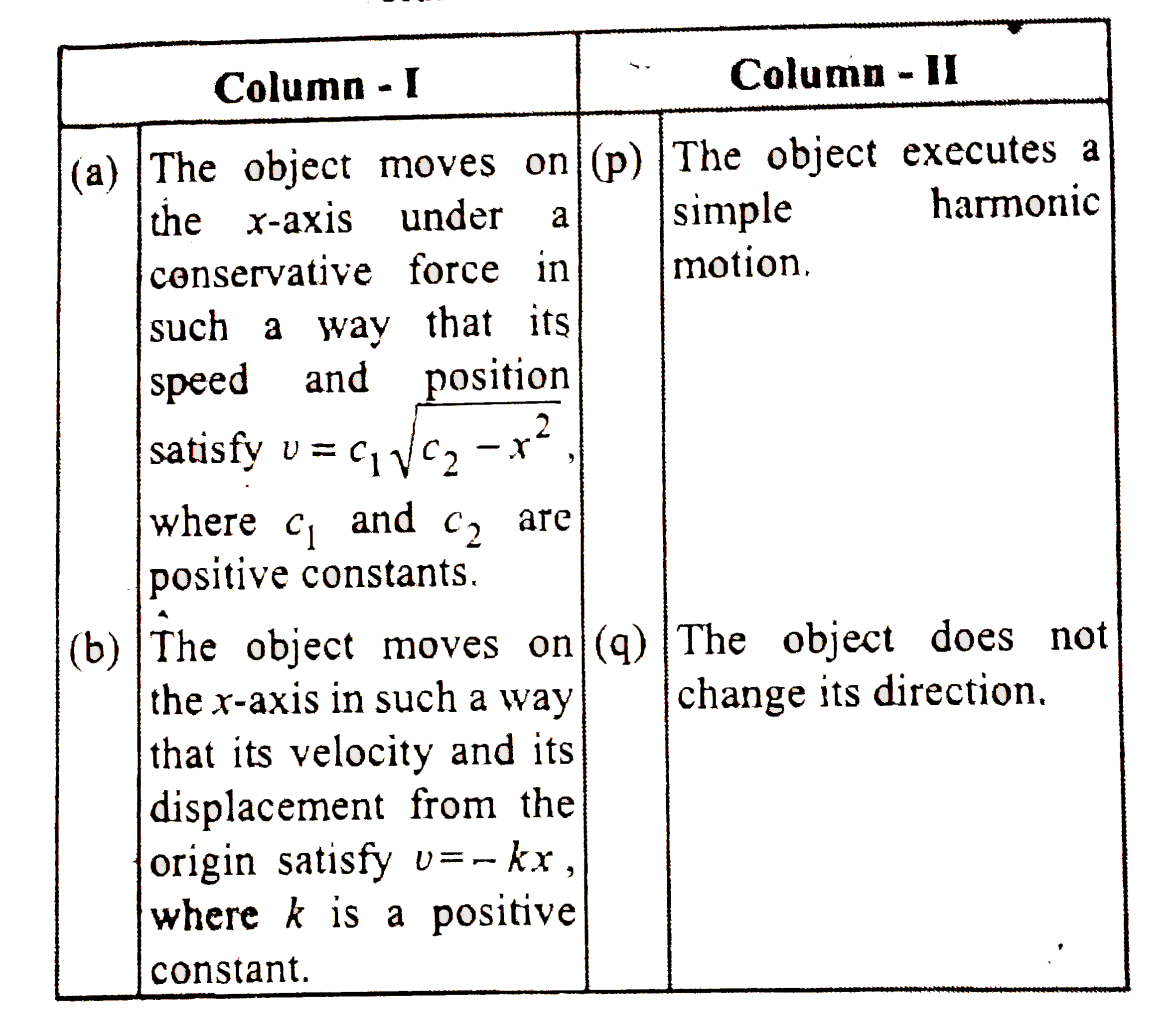
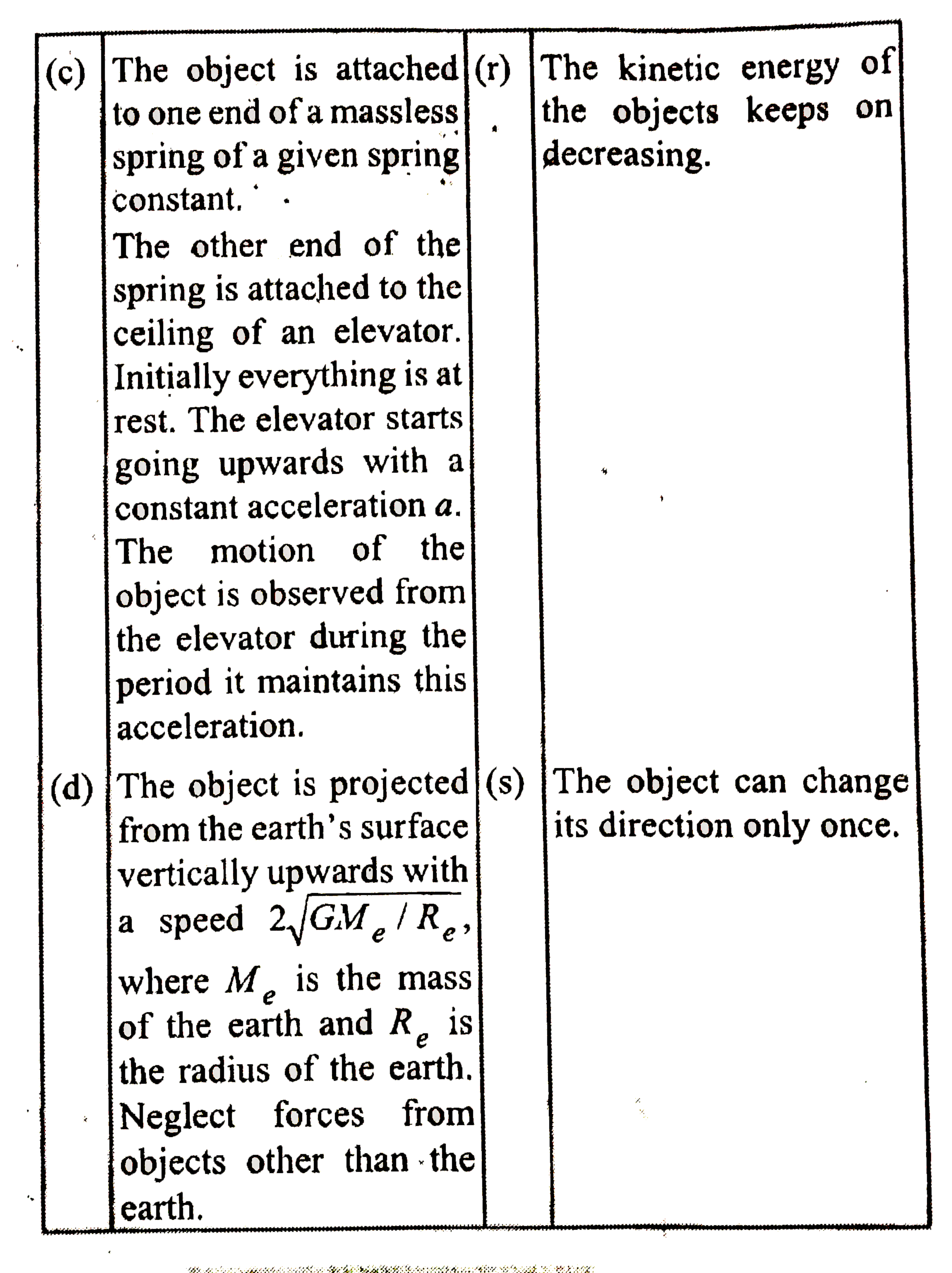
Video Solution
Text Solution
The correct Answer is:A-P;B-Q,R;C-P;D-Q, R
A-P,B-Q,R,C-P,D-Q,R
(A) Given v=c1√c2−x2
Comparing with v=ω√A2−x2, we find that this is a case of simple harmonic motion, Hence only option (A) is correct.
(B) v=−kx
⇒dxdt=−kx⇒x∫x0dxx=−t∫0kdt
⇒n(xx0)=−kt⇒x=x0e−kt⇒V=−kx0e−kt
So v decreases in magnitude always. So KE keeps on decreasing v always remains negative, so the object does not change its direction of motion.
(C) Here spring-block system will execute simple harmonic motion.
(D) Given v=√GMeRe>vescape So the object keeps on moving away from the earth Its speed goes on decreasing and it never changes its direction of motion.
|
Similar Questions
Knowledge Check
Match the crystal system (column I) with its characteristics (column II)
 A(i) - (C), (ii) - (D) , (iii) - (A), (iv) - (B)B(i) - (A), (ii) - (D) , (iii) - (C), (iv) - (B)C(i) - (C), (ii) - (D) , (iii) - (B), (iv) - (A)D(i) - (C), (ii) - (D) , (iii) - (B), (iv) - (A)
A(i) - (C), (ii) - (D) , (iii) - (A), (iv) - (B)B(i) - (A), (ii) - (D) , (iii) - (C), (iv) - (B)C(i) - (C), (ii) - (D) , (iii) - (B), (iv) - (A)D(i) - (C), (ii) - (D) , (iii) - (B), (iv) - (A)Match the reaction listed in coloumn-I with characteristic(s) listed in column-II
 A1−p,q,2−p,q,s,3−r,4−sB1−p,q,2−p,q,r,s,3−r,4−sC1−p,2−p,q,r,s,3−r,4−sD1−p,q,2−q,r,s,3−s,4−r
A1−p,q,2−p,q,s,3−r,4−sB1−p,q,2−p,q,r,s,3−r,4−sC1−p,2−p,q,r,s,3−r,4−sD1−p,q,2−q,r,s,3−s,4−rMath the carbohydrate in Column I with its characteristic given in Column II
 AA-s, B-r, C-p , D-qBA-p, B-q, C-r, D-sCA-r, B-s, C-p, D-qDA-s, B-r, C-q, D-p
AA-s, B-r, C-p , D-qBA-p, B-q, C-r, D-sCA-r, B-s, C-p, D-qDA-s, B-r, C-q, D-p
Match the molecules in column I with their characteristics in column II

View SolutionMatch the molecule in Column I with the characteristic in Column II

View SolutionMatch the polymers in Column I with the characteristic listed in Column II.
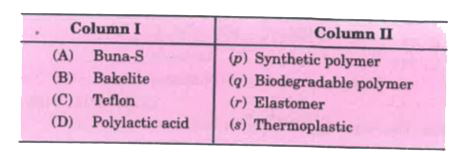
View SolutionMatch the compound listed in Column I with characteristic listed in Column II

View SolutionMatch the compounds listed in column -I with the characteristic(s) listed in column-II.
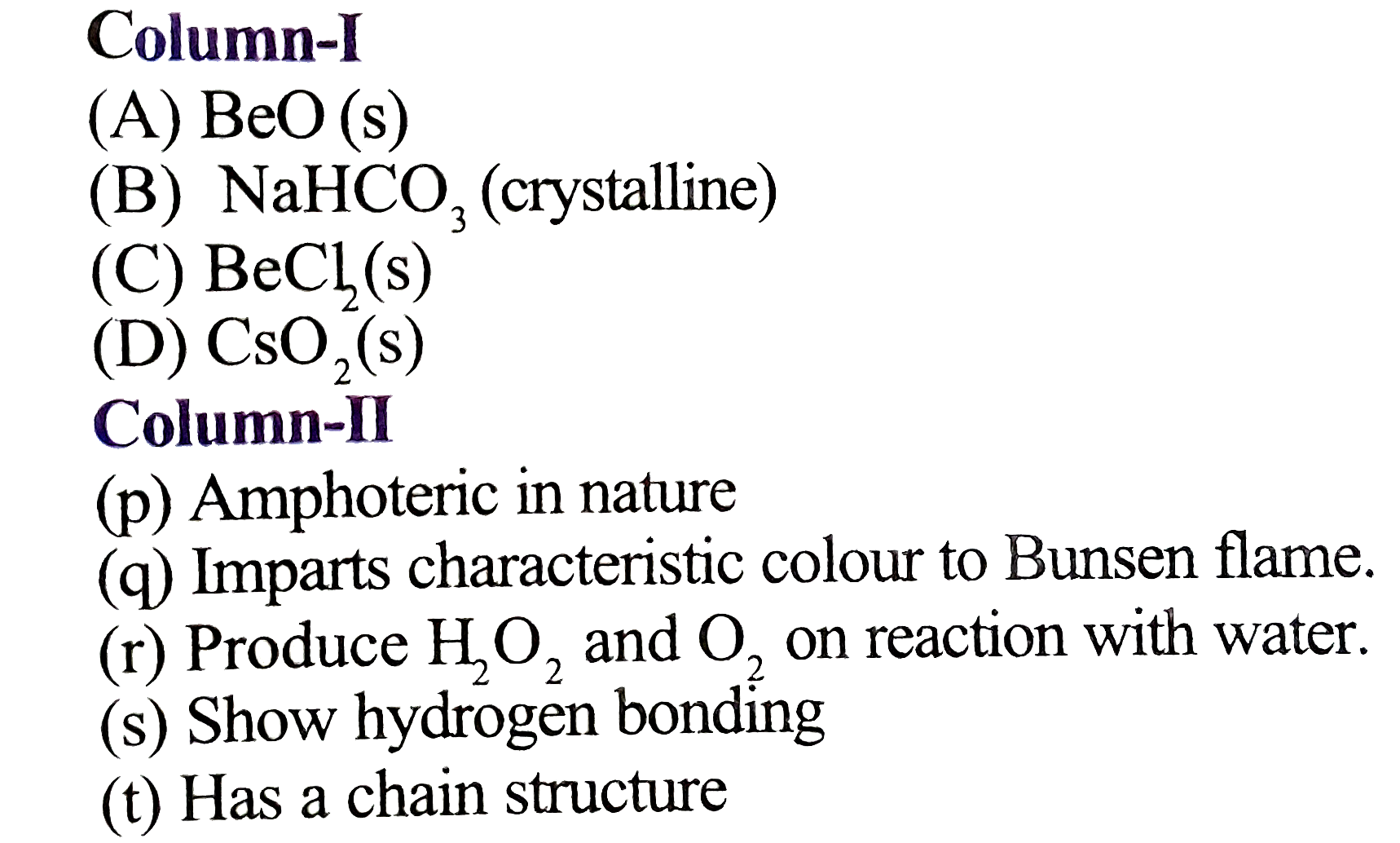
View Solution

